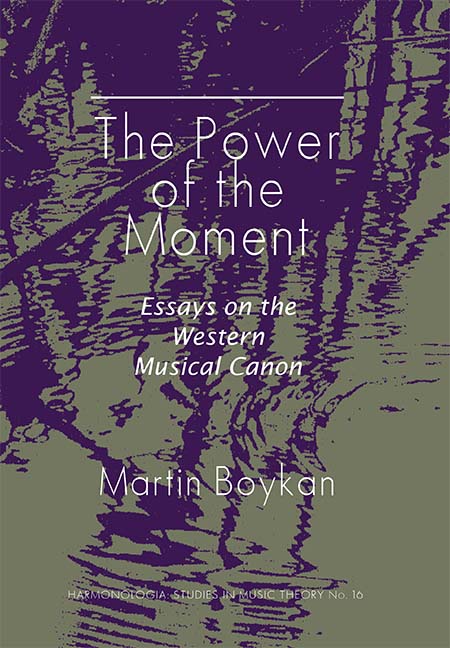Book contents
- Frontmatter
- Contents
- Acknowledgements
- Martin Boykan Biography
- I Introduction: Some Words About Theory
- II The Power of The Moment: The Hammerklavier and the Archduke
- III Voice and Piano in Dialogue: Seven Songs from the Winterreise
- IV A Recurrent Tonality: The Meaning of the Kiss in Verdi's Otello
- V Resetting the Clock: The Scherzo of Beethoven's Fifth
- VI The Power of Every Moment: Musical Continuity in J. S. Bach
- VII Coda
III - Voice and Piano in Dialogue: Seven Songs from the Winterreise
- Frontmatter
- Contents
- Acknowledgements
- Martin Boykan Biography
- I Introduction: Some Words About Theory
- II The Power of The Moment: The Hammerklavier and the Archduke
- III Voice and Piano in Dialogue: Seven Songs from the Winterreise
- IV A Recurrent Tonality: The Meaning of the Kiss in Verdi's Otello
- V Resetting the Clock: The Scherzo of Beethoven's Fifth
- VI The Power of Every Moment: Musical Continuity in J. S. Bach
- VII Coda
Summary
A very considerable literature has grown up around the German Lied. But it is curious that one indispensable feature, the piano introduction, does not often attract much attention. Perhaps it seems too trivial. It was invented, after all, to supply the singer with the correct pitch, and it often looks as though anybody could write one; you need only strum a few chords or quote a snatch of the vocal melody.
Nevertheless, the relationship between successive phrases is at the heart of our experience of music, and when a composer begins a song, he does have to choose from a multitude of options: the piano can lead directly into the vocal entrance or it can cadence before it; it can quote a vocal phrase verbatim, vary it, or ignore it altogether. And this is a choice that obviously matters since the introduction is the first music we hear. In spite of the fact that the entrance of the singer is the event we are waiting for, the character of the vocal line is decisively shaped by the piano introduction, and the consequences for everything that follows can be far-reaching.
Even a casual glance at Schubert's Winterreise reveals the care involved in the choice of each introduction along with their extraordinary variety. And the opening song, Gute Nacht, offers a telling example of a vocal melody that needs the piano introduction to realize its full tragic power. With its slow, steady repetition of a D-minor chord that creates a dirge-like atmosphere, the piano sets the emotional tone of the whole cycle. Against this background the vocal line twice descends into its lowest register, and there is nothing that would have prevented a composer from quoting it unchanged as the introduction to the song (Ex. 3-1). This is a familiar practice, and if we did not know the Winterreise, I doubt that we would have found anything to criticize; the song would still have been a moving experience. But now look at what Schubert actually wrote (Ex. 3-2). Piano and voice are remarkably similar; the piano also arpeggiates down to cadence in the lower register. But there is an essential difference.
- Type
- Chapter
- Information
- The Power of the MomentEssays on the Western Musical Canon, pp. 35 - 60Publisher: Boydell & BrewerPrint publication year: 2011



